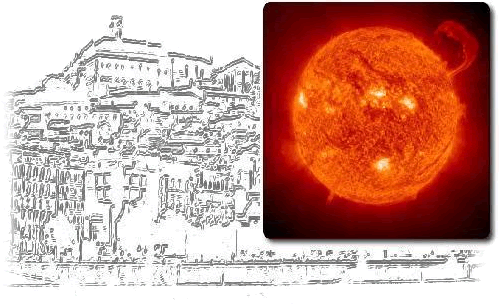|
|
|
|
|
|
|
|
|
|
|
|
|
Carolina Robustini, Mrs. - MSc |
|
Department of Astronomy, Stockholm University, AlbaNova, 10691 Stockholm, Sweden |
|
|
|
|
|
|
|
Session 1 - Speaker |
|
Peacock jets above the light bridge of a sunspot |
|
C. Robustini (1), J. Leenaarts (1), J. De la Cruz Rodriguez (1), L. Rouppe Van Der Voort (2); 1 - Department of Astronomy, Stockholm
University, AlbaNova, 10691 Stockholm, Sweden, 2- Institute of Theoretical Astrophysics, University of Oslo, P.O. Box 1029, Blindern, N-0315 Oslo, Norway |
|
|
|
We are going to present the results of a study about a series of long
scale and fan-shaped jets observed above the light bridge (LB) of the sunspot
AR11785. These jets appear originating from bright footpoints located on one edge of
the LB and moving along the LB.
The goal of our research is to determine the origin, the dynamics and the thermal
properties of the jets using H-alpha observations with the CRisp Imaging
SpectroPolarimeter at the Swedish 1-m Solar Telescope and images from the
Atmospheric Imaging Assembly (AIA) at the Solar Dynamics Observatory.
The geometrical analysis performed on the CRisp data allows for a description of the
dynamics; in particular these jets are characterized by a typical length of about 30
Mm and an inclination of about 30°-50° with the solar surface. The jets are
impulsively accelerated to a speed of about 100 km/s close to photospheric
footpoints in the LB and exhibit a constant deceleration of the order of the solar
gravity projected on the jet axis.
The images from the AIA reveal bright jet fronts in the hotter channels, especially
in the wavelengths 13.1 nm, 17.1 nm and 30.4 nm. This suggests that the jets
undergo a compressive heating as they reach the corona.
The AIA optically thin channels allows also for the calculation of the differential
emission measure (DEM) of the footpoints. From this analysis we obtain a value of
the DEM in the footpoints that is two orders of magnitude larger than in typical
active regions and comparable to transition region's temperature.
The mechanism producing these jets is not totally clear but a likely explanation,
supported by the presence of an opposite polarity of the magnetic field of the LB
compared to the umbra, is a magnetic field reconnection taking place on the edge of
the LB.
|
|
|
|
|
|
|
|




 









 |



